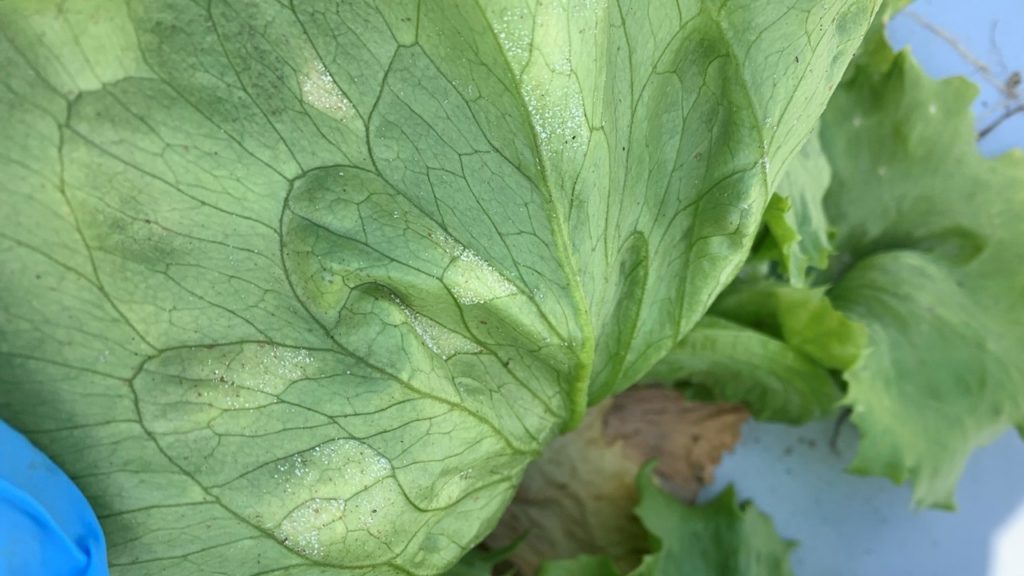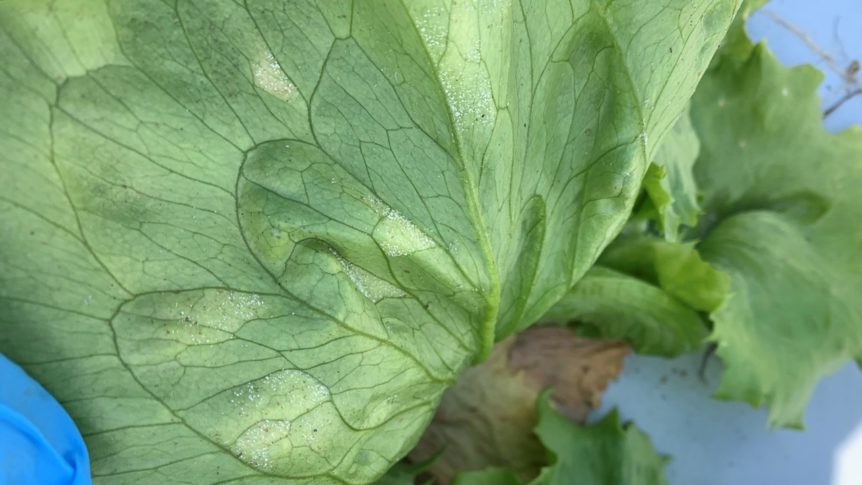
Downy mildew disease has been detected in lettuce (LDM) in multiple locations in the Everglades Agricultural Area (EAA) in Florida. University of Florida Institute of Food and Agricultural Sciences (UF/IFAS) noted the disease’s observance on Saturday.
This year’s detection is later than normal, since prior detections in 2023 and 2024 were reported in February. The weather forecast noted weather conditions call for cool and humid nights and are favorable for disease development.
Vegetable producers scouting for the disease should be wary of its symptoms. Lesions are often surrounded by leaf veins, giving infections an angular appearance. As the disease progresses, lesions coalesce and only larger veins obstruct lesion expansion. Lesions become increasingly chlorotic over time and eventually turn brown and necrotic.
Downy mildew can be a devastating disease because it is capable of infecting any growth stage of the fruit, from seedling to mature plant. Head, leaf and cos lettuce are all susceptible.
Because prevention and early detection are key for the disease’s management, lettuce producers are encouraged to speak freely with each other and Extension personnel in the area. Early notification can benefit growers by minimizing control costs and reducing the disease’s impact.
If downy mildew is detected in the area, farmers should begin a fungicide program immediately to avoid severe losses.
Please notify Katia Xavier, plant pathologist at UF/IFAS EREC, kvianaxavier@ufl.edu, and Anna Meszaros, UF/IFAS PBC commercial vegetable extension agent, ameszaros@ufl.edu, if you find downy mildew in your lettuce field.










